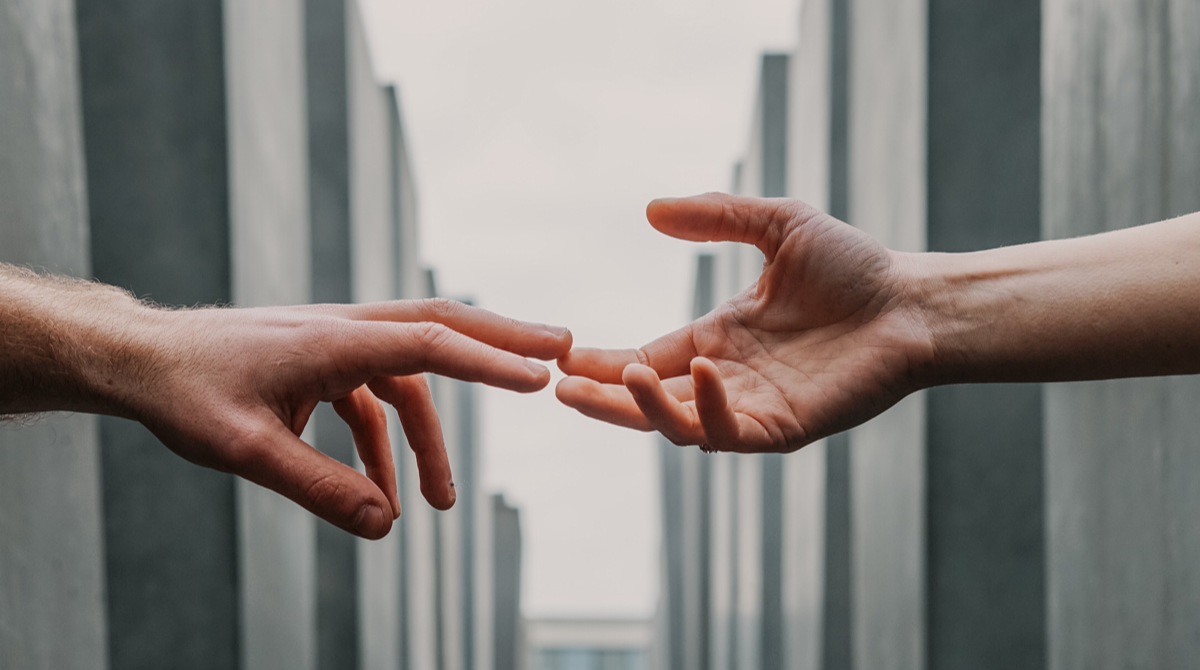It is said that no one is an island – a truth we often take for granted and something that has become more poignant in the era of COVID.
Human connection is one of the most important elements of Maslow’s hierarchy of needs – second only to food, sleep, and shelter. The need to be heard, seen, valued, and touched has become even more pronounced in recent months with the implementation of COVID lockdowns and regulations that limit – if not forbid entirely – who, when, and how often we can see the people in our lives.
The lack of social connection – or loneliness – has been implicated in a variety of personal ills such as increased inflammation, greater risk for heart disease, and a greater likelihood of dying – either through suicide or any other cause. Similarly, loneliness precedes a variety of social ills such as drug use, anti-social behaviour, or in exceptional cases, horrific crimes such as mass shootings.
This newfound lack of personal interaction with people has dire consequences. However, this is news only to the young among us. Research indicates that people who live in retirement or nursing homes die up to ten years earlier than those who live at home, among family, or within their accustomed social environments (Trybusińska & Agnieszka, 2019). Researchers Pavey, Greitemeyer, and Sparks (2011), even go so far as to suggest that social connection is a `core’ psychological need, and that those of us lucky enough not to worry about food, water, or shelter experience a profound – even dire – need to be connected with other people.
When we connect, we feel good. We secrete oxytocin when bonding with people. This hormone is present in nursing mothers and their children, lovers, and friendships. It mediates the release of other `feel good’ hormones such as dopamine and serotonin as well. We experience lower blood pressure, lower inflammation, and fewer feelings of depression and sadness when we are among people. In fact, while I was researching this topic, I came across work by Cox and Bonner (2011) which suggested that ‘togetherness’ may very well have been a crucial factor in the transition from unicellular to multicellular life. In other words, the ability for species to cooperate, to come together, and to form social bonds, may very well have been a steppingstone towards humanity!
Moreover, humanity’s greatest achievements were only possible through cooperation and connection. No single person on their own would have been able to send people to the moon. No government, charity, or corporation rests on the shoulders of a single person. Cooperation, not competition, is what drove our species to ever greater heights. (Gatti, 2016)

It is not outlandish to consider that the COVID pandemic has drastically increased feelings of stress, anxiety, and loneliness among all of us. No one is denying that there are people in the community who must take additional precautions to protect themselves during this time if they have a weakened immune system or underlying health conditions. However, the vast majority of people do not fall into the high-risk category and therefore, the question remains, should we be getting back to work sooner rather than later? This is not only to ensure our economies can thrive, but so that we are able to minimize the immeasurable psychological impact of quarantine and social distancing.
This insidious virus has not only disrupted immune systems and economies – it has disrupted the social fabric of our humanity. Gone are the days of sundowners or cheeky BBQs with friends. The young and old among us are experiencing greater rates of depression and anxiety because of lockdowns (Walter, 2020). Doctors, nurses, and other critical workers are burning out, reporting stress-related absenteeism, and greater rates of stress and anxiety (Van Hoof, 2020). According to researchers, some of the major causes of stress and anxiety are the duration of the lockdown, fear of infection, frustration, boredom, food insecurity, economic insecurity, and informational overload (Davey, 2020). Before the year is over, the number of people who will need psychological and psychiatric attention due to the strain that COVID and lockdowns have placed on them is expected to rise drastically (The potential long-term psychological effects of the lockdown, 2020)
How, then, do we satisfy our need – our desire – for social connection? Well, thankfully we live in the age of connection. Platforms such as Skype, WhatsApp, Telegram or even an old-fashioned phone call can help us remain connected with one another in a manner healthier and less prone to disinformation than social media. If you live with people, be present with them. Talk to your loved ones about how the pandemic or the lockdowns are affecting them. Creating a shared narrative – a story you are all invested in – can foster feelings of closeness. Spend time cooking your favourite meal. Write about your experiences. You can use a journal or a diary or an online writing group to explore your thoughts and feelings about your experience with COVID and the lockdown (Wickham, 2020). Ironically, some experts suggest disconnecting from social media or the constant influx of news and opinion to protect your mental health (Hiremath, Kowshik, Manjunath, & Shettar, 2020). And, of course, the time-tested advice of “eat well, sleep well, and exercise” still holds firm.
Remember that you have joined the rest of the world in the single largest social and scientific experiment ever conducted. You, yes you, reading this article right now, are important. Your actions – your sacrifice – by social distancing, by wearing a mask, by giving up your routine, are instrumental to containing this disease and saving lives. You are part of a global community striving towards victory. Never forget that you are part of something larger, something magnificent.


